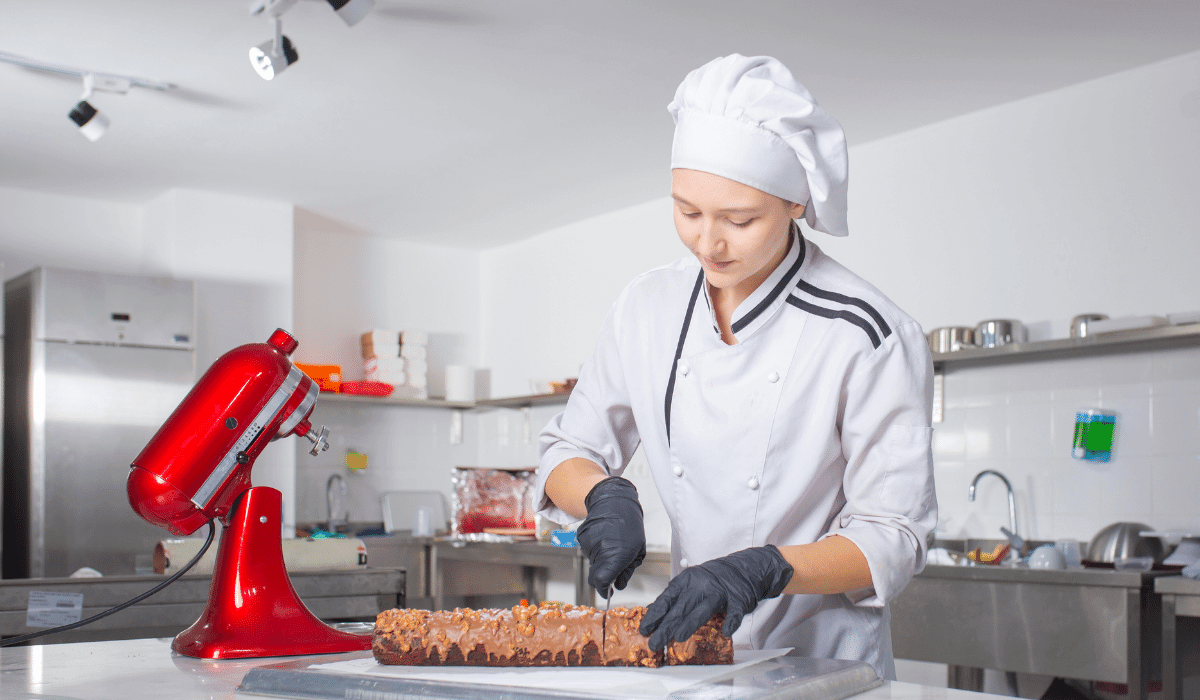There is an old saying by Julia Child, “There is nothing nicer than a kitchen really made for a cook. Things that are designed to be used always have an innate beauty.” Your kitchen is the beating heart of your establishment. Therefore, it is critical to plan a business model that includes the kitchen at the center and factors in your risk appetite and the requirements of your clientele.
A case in point is setting up a ‘ghost restaurant’ or a virtual restaurant is a much easier task than building a brick-and-mortar traditional kitchen. Even so, starting a venture in this relatively alien territory takes veteran expertise and a keen eye for rewarding risks. That’s why we’re here to help! If you’re looking to open a ghost kitchen, here are some powerful tips that can help you run a successful ghost restaurant.
How Do Ghost Restaurants Work?
At a ghost kitchen, meals are prepared to be delivered to customers and these orders are received mostly through third-party delivery services or an application owned by the business owner. Ghost kitchen owners need to create a strong social media strategy given that they cannot rely on walk-in customers.
Chefs at virtual kitchens do not distribute pre-packaged food items. They prepare fresh food just like a sit-down restaurant and serve it to people through delivery. According to Reportlinker, by 2025, the online food delivery services global market will reach $192.16 billion.
The COVID-19 pandemic brought unprecedented changes in every sphere of our lives. It was at this time that people accepted the concept of ghost kitchens more than ever before. As per statistics, in the US, the delivery sector and digital ordering have grown 300% faster than dine-in over the last five years.
7 Simple Steps to Launch a Successful Ghost Kitchen Business
Before you launch a ghost restaurant, it is critical to understand the types of models that exist, your customer base, and the wherewithal required for the rent. Even when all ghost kitchens have the same operation process, different delivery models are involved. Most virtual kitchens operate from a commissary kitchen, which is a complete kitchen available for rent.
While a commissary kitchen can be shared, most restaurant owners prefer a private commissary. For instance, mobile kitchen operators and caterers rent a commissary kitchen to prepare meals in advance for health facilities and businesses that outsource catering.
1. Assess the Market and Set Menu Prices
Whether you are a pro or new to the ghost kitchen concept, you need to carry out thorough research about your targeted customers and their preferences, and set menu prices and the menu accordingly.
Relevant market research may vary depending on the location, cuisine, target customer, and necessary equipment and capital. Make sure to understand the ins and outs of your ghost kitchen’s locality well, in addition to the cuisine, your competitors, and the reasonable pricing.
See Also: 10 Food Tech Trends and Innovations
2. Select a Delivery Strategy (Types of Ghost Kitchens)
Choose of these delivery strategies for your ghost kitchen restaurant:
- Independent ghost kitchens prepare a single menu. They partner with third-party delivery applications that pick up orders from the front desk. They usually rely on these applications for their orders and do not own their own customer database. They cannot interact directly with their customers without their partnered delivery services.
- A multi-brand ghost kitchen uses a single kitchen space to prepare multiple dark kitchen menus. This increases their total number of orders and broadens their customer reach.
- The operator-managed ghost kitchen or virtual franchise is a brick-and-mortar eatery that prepares the menu of a virtual restaurant in its kitchen. Customers place their orders through third-party applications or the virtual kitchen’s website. Integrating an operator-managed ghost kitchen is advantageous for cafe owners and bakeries who do not rely on their kitchen during the day.
- A mid-ground ghost kitchen prepares food orders with a small storefront from which customers can directly fetch their orders. Several mid-ground satellite kitchens use off-premise dining and drive-through business models where a single window suffices for order collection. Mid-ground ghost kitchens have a larger customer base as some customers want to eat at home but want to save on delivery.
- A brand-owned ghost kitchen signs a contract with a single third-party delivery service and takes orders only through their platform. Having a single delivery partner has its own perks as the delivery application will push your business more on their platform.
3. Choose a Kitchen Location
It is crucial to choose a site closer to your customer base when opening a ghost kitchen. If you are terminating your present lease or searching for a ghost kitchen, consider how close you are to your target audience. The delivery is faster if you are closer to your consumer, which will make your customers happy and satisfied.
4. Adapt Quickly to Customers’ Changing Needs
It is also important to adapt quickly to customers’ changing needs. Make sure to perform regular surveys and stay abreast of the latest trends in the food industry. While realizing these changes quickly may require a greater investment and manpower usually difficult to conjure on short notice, strategizing to produce economical and still effective ways to implement new trends will help you stand out and greatly attract customers to your establishment.
You May Like: 9 Reasons Why Restaurants Fail and How Do You Prevent Your Restaurant from Failing?
5. Build a Brand
Given their limited ability to reach out to customers, a ghost kitchen’s brand is all the more important. This poor exposure, by design, means quirky and stand-out brands that produce quality food will stand above ghost kitchens that only focus on quality dining. Make sure to work with marketing and brand consultants to carve your identity in the market, and align your design and merchandise with the final concept. Though limited in visual contact, ghost kitchens can still ensure their brands are perfectly displayed in all locations where customers do see them, such as on top of takeout containers, on the delivery app’s interface, on their logo, and on the ghost kitchen’s official website and social media platforms.
6. Get the Right Virtual Inventory Technology
The relationship between ghost kitchens and virtual inventory is instrumental and inevitable. As a result, making sure that the inventory is managed through robust software is imperative. Given its more dispersed nature than that of a regular inventory, a virtual inventory begs for an all-encompassing interface that helps you track, add, and remove items from the overall inventory regardless of their location. Make sure to invest in a high-quality management technology that is designed with a virtual inventory in mind.
7. Buy Quality Equipment
Procuring the right equipment for your ghost kitchen is essential for long-term benefits. According to the National Restaurant Association, efficient equipment is the key to significant savings. Therefore, you must be careful before choosing equipment for running your business successfully.
A ghost or virtual kitchen works completely from the backend. While you save substantial costs associated with front-end functions, a significant amount goes into purchasing the right quality kitchen equipment. In the co-working ghost kitchen, equipment is already provided, however, in the typical ghost kitchen model, operators rent space only to set up the kitchen and procure their own equipment.
Typical ghost kitchen operators should invest a substantial amount in procuring their equipment. Whether you’re a beginner restaurateur or expanding your kitchen’s footprint, knowing how to choose a commercial ice machine, range, oven, or fryer for greater productivity and savings in your kitchen can be instrumental in determining your success.
See Also: Top 7 Money Management Strategies to Improve Your Finances
Why Do Business Owners Prefer Ghost Restaurants?
Ghost kitchens are a low-risk option for an individual wanting to open a food service business. Most ghost kitchen locations are in a shared kitchen service that charges restaurant owners rents on an hourly, daily, monthly, or yearly basis. When compared with a brick-and-mortar restaurant, virtual kitchen models are more feasible and pocket-friendly.
This encourages small business owners to experiment with what works for them. Before investing in a dine-in restaurant, small entrepreneurs can make the necessary improvements in their ghost kitchen and use it to generate sales and attract more customers.
Ghost kitchens allow you to improve your food service, focus more on your marketing strategies, and help you save on the huge amount required to set up a traditional kitchen.
According to statistics, the COVID-19 pandemic only accelerated the trend of online food delivery. About 112 million people used food delivery services in 2020, which was a 17% year-over-year increase from 2019. With the speed at which ordering and delivery businesses are growing, ghost kitchens are undoubtedly the future of the restaurant industry and profitable business ventures.





















